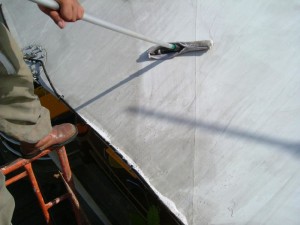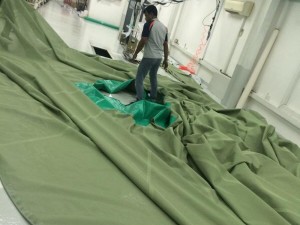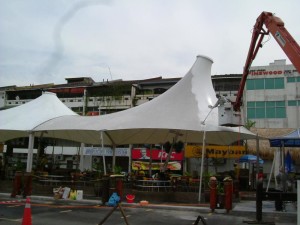What are fabric structures?
Tensile fabric structures are basically the forms of fiber and fabric that are used in the creation of building designs. They are an aesthetic free form material, and can be made in order to survive any international codes of construction compliance regarding fire safety, structural support and needs, weather demands, and natural factors.
Tensile Fabric Structures Malaysia can be used in a variety of construction and building sites, and in a variety of ways. They are an extremely versatile and innovative form of construction.
However, like every other building and construction material, it must be handled according to its limitations and weaknesses. Because not all fabric structures are built the same, you must determine which material will be the best for the task at hand. Different fabrics will withstand different weather, demands, and chemical treatments better than others.
Fabric structures are almost always coated with a synthetic topcoat that helps to ensure the structure’s durability and long life. Those using the Tensile Fabric Structures Malaysia must also take into consideration how these topcoats will impact the durability and resilience of your fabric structure under any kind of destructive factors. The two most popular fabric structures used around the world, however, are the polyester fabric structure, and the woven fiberglass fabric structure.
Polyester Tensile Fabric Structures
Polyester fabric structures are the most cost efficient and cost effective fabric materials that are used in construction and building today. It is the most ideal for both temporary and permanent tension structures. It grew into popularity in the 1960s, when it began to replace nylon, which was by far the most used Tensile Fabric Structures Malaysia used at the time.
It was a softer, more pliable, and more inexpensive material than nylon, and was the reason it grew to such heights of popularity so quickly. It can survive and thrive with the most minimal of stretching through a wide span of temperatures and humidity levels. The coatings that are most typical of this particular structure can help protect the fabric structure against mildew marks, streaking of the coating, and stains for regular usage.
The most commonly used topcoats include acrylics, PVDF, PVF film lamination, and polyurethane acrylics. Vinyl lamination is most often used for temporary constructions and buildings, if you need a quick fix for a problem. Another option, which is similar but has a more long lasting effect, is a vinyl coating for the polyester fabric structure.
Vinyl coating can be used for either a temporary building, or for a permanent one. Polyester fabric structures, depending on the top coating, can last anywhere from 20 to 25 years. The most important maintenance issue with the polyester fabric is that it must be periodically re-tensioned, but this is not a very difficult task.
Woven Fiberglass Tensile Fabric Structures
Woven fiberglass tensile fabric structures are also commonly known as Teflon coated fiberglass, or PTFE for short. Like the polyester fabric structures, it is a very strong and durable fabric structure. It is the preferred material for any permanent large building or construction projects.
All constructions projects which require a long lasting, long living Tensile Fabric Structures Malaysia, as well as for projects with strict and specific construction code compliance restrictions and requirements. It has an exceptionally strong resilience to damaging factors such as the weather, the heat and cold, and any chemical interactions.
It can have at least a 25-year life, typically longer. It is translucent from 7% through 15%, and reflects around 68% to 75% of sunlight. The light that is transmitted through the woven fiberglass fabric structure is typically without shadows or glare, and is color balanced.
Aesthetically, the woven fiberglass begins as a shade of white that is just off white, or a barely brown shade, which is rectified in the direct sunlight. In direct sunlight, the woven fiberglass becomes the milky white that most people are used to seeing, and can most easily identify the Tensile Fabric Structures Malaysia with.
The biggest advantage to using the woven fiberglass for your construction and building project is that it is incredibly low maintenance, and does not need much work after installation. To join together different patches of woven fiberglass fabric structure, you will need to heat seal the seams to ensure a solid and long lasting bond. For cheap and durable structures you can rely on, woven fiberglass is the way to go.
Discover more over here about helpful hints on Membrane Structures.
Tag:- Tensile Membrane Structures Company, Tensile Fabric Structures Malaysia, Membrane Structures, , Fabric Roof, Fabric Structures, Tensile Membrane, Tensile Membrane Structures Malaysia, Tensile Membrane Structures, Tensile Fabric Structures




